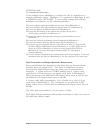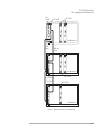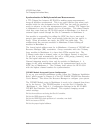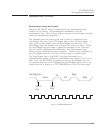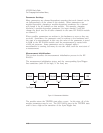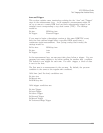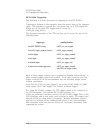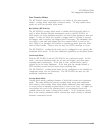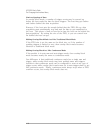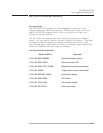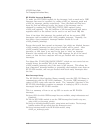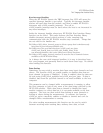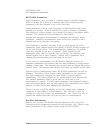
HP E1433A Triggering.
The following is a short discussion of triggering for the HP E1433A.
Triggering is defined as the transition from the armed state to the triggered
state. This transition is caused by a low going edge on a TTL trigger line.
Which one of the eight TTL trigger line is chosen by
e1432_get_ttltrg_lines().
The low-going transition of the TTL trig line can be caused by any of the
following items:
trigger type enabling function
the AUTO TRIGGER circuitry e1432_set_auto_trigger()
the e1432_trigger_measure() function e1432_trigger_measure()
a source trigger e1432_set_trigger_channel()
a tach trigger e1432_set_trigger_channel()
an external trigger e1432_set_trigger_ext()
an input level or bound trigger event e1432_set_trigger_channel()
and e1432_set_trigger_mode()
Each of these trigger sources can be enabled or disabled independently, so
quite complex trigger setups are possible. In all cases, however, the first
trigger event kicks off the measurement and the following trigger events
become superfluous.
Note that for e1432_set_auto_trigger() the setting E1432_MANUAL_ARM
really means “don’t auto trigger” not “expect a manual trigger”.
For single HP E1433A systems, the TTL trigger signal is not connected to
the VXI backplane. For multiple HP E1433A systems, the
e1432_init_measure() function connects the HP E1433A trigger lines to the
VXI backplane, and at that point, your selection of which TTL trigger lines
through e1432_get_ttltrg_lines() is relevant. Multiple mainframe systems
will need to account for the unidirectional nature of the inter-mainframe
MXI extenders which will prevent all but the “upstream” mainframe from
triggering the system.
HP E1433A User's Guide
The C-Language Host Interface Library
4-24



